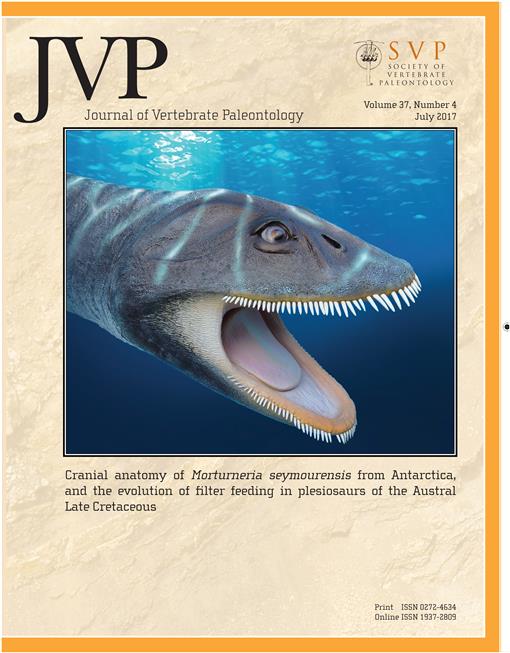Adriana M. Candela, Ricardo A. Bonini
Journal of Vertebrate Paleontology 37 (4), (1 July 2017) https://doi.org/10.1080/02724634.2017.1352591
We describe a new caviomorph rodent, Cavia cabrerai, sp. nov. (Caviidae, Caviinae), from the upper levels of Andalhuala Formation (San Fernando Norte locality, Catamarca Province, northwestern Argentina), which represents the oldest fossil record of the genus. The new species differs from extant and extinct species of Cavia by a unique combination of characters: large size, proportionally anteroposteriorly elongated molars, slightly anteroposteriorly compressed prisms, relatively shallow primary lingual flexids, abundant cement in the lingual flexids, and anterolingual widening of the second crests of cheek teeth. A phylogenetic analysis indicates that Cavia cabrerai, sp. nov., is the sister taxon of extant Cavia species and displays dental characters more plesiomorphic than the latter. Some characters of C. cabrerai, sp. nov., namely, compression of prisms and depth of flexids, are morphologically intermediate between the related extinct Caviinae Palaeocavia and the extant species of Cavia. An ash bed dated at 4.72 ± 0.08 Ma that overlies the fossiliferous level of the new material supports the presence of Cavia close to the Miocene-Pliocene boundary. The origin of Cavia may have been triggered by the expansion of relatively open and arid environments that arose near the Miocene-Pliocene boundary.

